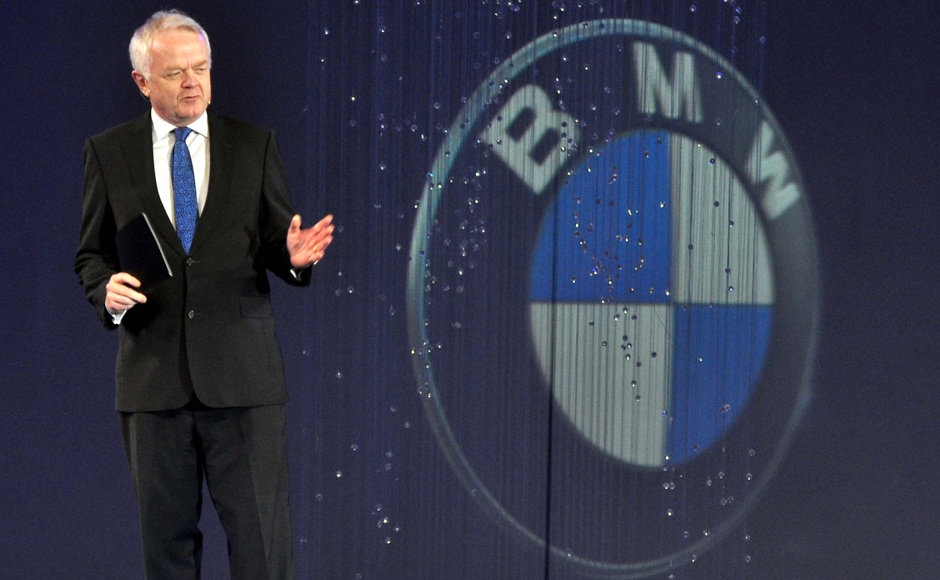The China Market: Analyzing The Struggles Of BMW, Porsche, And Other Automakers

Table of Contents
Intense Domestic Competition
The rapid expansion of the Chinese automotive industry presents a significant challenge to foreign automakers. The success of domestic brands has dramatically altered the competitive landscape, creating a complex environment for international players seeking a foothold in this lucrative market.
Rise of Domestic Brands
The rise of Chinese automakers like BYD, Nio, and Xpeng represents a formidable challenge. These domestic brands are rapidly gaining market share, leveraging several key advantages:
- Aggressive pricing strategies: Domestic brands often offer comparable quality at significantly lower prices, directly undercutting established international brands.
- Technological advancements: Chinese manufacturers are making significant strides in electric vehicles (EVs) and autonomous driving technologies, often surpassing their international counterparts in specific areas. This includes advancements in battery technology and charging infrastructure integration.
- Strong government support and subsidies: Government policies actively support the growth of domestic automakers through subsidies, tax breaks, and preferential treatment. This creates an uneven playing field for foreign competitors.
- Targeted marketing campaigns: Chinese brands effectively target domestic consumer preferences and cultural nuances, building strong brand loyalty and market penetration.
Understanding Consumer Preferences
Successfully navigating the China market necessitates a deep understanding of evolving consumer preferences. Chinese consumers, increasingly sophisticated and tech-savvy, prioritize features and technology over traditional brand heritage:
- Preference for electric and hybrid vehicles: The strong government push towards electrification, coupled with growing environmental awareness, has created a massive demand for EVs and hybrids.
- Demand for advanced driver-assistance systems (ADAS): Chinese consumers highly value advanced safety features and driver assistance technologies.
- Emphasis on connectivity and in-car entertainment: Connectivity and infotainment systems are key purchasing factors, with consumers demanding seamless integration of mobile devices and online services.
- Growing awareness of environmental concerns: Environmental consciousness is rising, leading to increased demand for eco-friendly vehicles and sustainable manufacturing practices.
Navigating Regulatory Hurdles and Infrastructure Challenges
Beyond competition, international automakers face significant regulatory and infrastructural obstacles. These challenges require substantial investment and strategic adaptation.
Stringent Emission Standards and Regulations
China has implemented increasingly strict emission standards and regulations, making compliance a major challenge:
- Compliance costs: Meeting these stringent standards requires significant investment in research and development, leading to higher production costs.
- Permitting and licensing: Obtaining the necessary permits and licenses to operate within the Chinese market can be a complex and time-consuming process.
- Bureaucratic processes: Navigating bureaucratic processes and potential delays adds to the overall complexity and cost of entering the market.
Infrastructure Limitations
Inadequate charging infrastructure, particularly in less-developed regions, poses a significant obstacle to the widespread adoption of electric vehicles:
- Uneven distribution of charging stations: The availability of charging stations varies significantly across the country, creating range anxiety among potential EV buyers.
- Range anxiety: Concerns about running out of charge before reaching a charging station hinder EV adoption.
- Investment in infrastructure: Significant investment is needed to expand the charging infrastructure nationwide to support the growing demand for electric vehicles.
Supply Chain Disruptions and Economic Fluctuations
External factors, such as global supply chain disruptions and economic volatility, further complicate the challenges faced by international automakers in China.
Global Supply Chain Issues
Global supply chain disruptions, often exacerbated by geopolitical events, impact the availability of crucial components and materials:
- Sourcing difficulties: Securing essential components can be challenging, leading to production delays and increased costs.
- Increased production costs: Supply chain constraints directly increase production costs, affecting profitability.
- Production timeline impact: Delays in sourcing components can significantly impact vehicle production timelines and delivery schedules.
Economic Volatility
Economic fluctuations within China directly impact consumer spending and demand for luxury vehicles:
- Consumer confidence: Economic downturns can significantly reduce consumer confidence and purchasing power, directly impacting sales of luxury vehicles.
- Reduced purchasing power: Economic uncertainty can lead to reduced purchasing power, making luxury vehicles less accessible to many consumers.
- Adaptable pricing and marketing: International automakers need to adopt flexible pricing and marketing strategies to adapt to fluctuating economic conditions.
Conclusion
The China market presents both monumental opportunities and considerable challenges for international automakers like BMW and Porsche. Intense domestic competition, regulatory hurdles, infrastructure limitations, and economic volatility significantly impact their performance. To succeed, these companies must adapt to evolving consumer preferences, invest in localized production and R&D, navigate complex regulatory landscapes, and build robust supply chains. Understanding and addressing these China market automotive struggles is crucial for long-term success in this vital market. Therefore, thorough market research, strategic partnerships, and a commitment to innovation are essential for navigating the complexities of the China market and achieving sustainable growth within the China automotive industry. Ignoring these challenges could mean missing out on a significant share of the world's largest automotive market.

Featured Posts
-
 Bof As Take On High Stock Market Valuations And Investor Concerns
Apr 24, 2025
Bof As Take On High Stock Market Valuations And Investor Concerns
Apr 24, 2025 -
 Should Investors Worry About Elevated Stock Market Valuations Bof A Weighs In
Apr 24, 2025
Should Investors Worry About Elevated Stock Market Valuations Bof A Weighs In
Apr 24, 2025 -
 Cassidy Hutchinson Key Witness To January 6th Announces Memoir
Apr 24, 2025
Cassidy Hutchinson Key Witness To January 6th Announces Memoir
Apr 24, 2025 -
 Utac Chip Tester Sale Chinese Buyout Firms Potential Divestment
Apr 24, 2025
Utac Chip Tester Sale Chinese Buyout Firms Potential Divestment
Apr 24, 2025 -
 Turning Poop Into Podcast Gold Ai Digest For Repetitive Documents
Apr 24, 2025
Turning Poop Into Podcast Gold Ai Digest For Repetitive Documents
Apr 24, 2025
